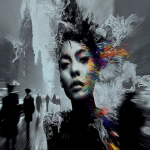Explore the Best AI Image Gallery
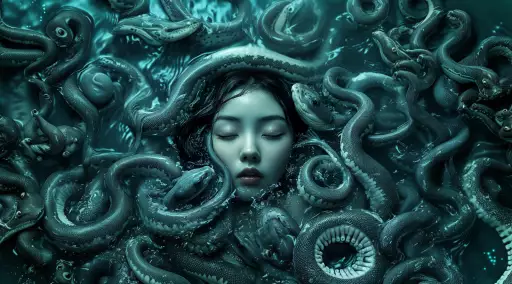
Where Tech Meets Muse: AI-Powered Visual Experiences and the Future of Creativity
The intersection of artificial intelligence (AI) and creativity is rapidly evolving, giving rise to a new era of visual experiences that are pushing the boundaries of imagination. From immersive installations to personalized artwork, AI is empowering artists, designers, and creators to explore uncharted territories and redefine the very essence of artistic expression. This blog post delves into this fascinating realm, examining the transformative impact of AI-powered visual experiences on the creative industry, exploring its diverse applications, and addressing the ethical considerations that accompany this technological revolution.
Reshaping the Creative Landscape
AI is fundamentally changing the way we create and consume visual content. Traditionally, artistic creation has been a solitary endeavor, relying heavily on human intuition and skill. Now, AI algorithms can assist artists in various stages of the creative process, from generating initial concepts and designs to refining existing artworks. This collaboration between human creativity and artificial intelligence opens up exciting possibilities:
- Concept Generation: AI can analyze vast datasets of images, patterns, and styles to generate novel ideas and inspire new artistic directions.
- Style Transfer: AI algorithms can apply the style of one artwork to another, allowing artists to experiment with different aesthetics and create unique hybrid pieces.
- Interactive Art Experiences: AI can power immersive installations that respond to viewers movements and interactions, creating dynamic and personalized artistic experiences.
Applications Across Industries
The impact of AI-powered visual experiences extends far beyond the realm of fine art. It is transforming various industries, including:
- Advertising and Marketing: AI can generate personalized visuals for targeted advertising campaigns, enhancing engagement and effectiveness.
- Gaming and Entertainment: AI-powered game environments offer more realistic and immersive experiences, creating dynamic narratives and engaging players on a deeper level.
- Fashion and Design: AI can assist in designing clothing collections, predicting trends, and personalizing fashion choices based on individual preferences.
Ethical Considerations
While the potential of AI-driven visual experiences is immense, it is crucial to address the ethical considerations that arise with this technology:
- Copyright and Ownership: Questions surrounding the ownership of AI-generated artwork and the rights of human creators need to be carefully considered.
- Bias and Fairness: AI algorithms can inherit biases present in the data they are trained on, potentially leading to unfair or discriminatory outcomes in visual content generation.
- Transparency and Accountability: It is important to ensure transparency in how AI systems are developed and used, and establish mechanisms for accountability when issues arise.
Future Trends
The field of AI-driven visual experiences is constantly evolving. We can expect to see further advancements in:
- Generative Adversarial Networks (GANs):** GANs, a type of AI architecture, will continue to produce increasingly realistic and sophisticated visuals.
- Neuromorphic Computing: This approach to computing mimics the structure and function of the human brain, potentially leading to more intuitive and creative AI systems.
- Virtual and Augmented Reality (VR/AR):** AI will enhance VR/AR experiences by creating more immersive and interactive environments.
Conclusion
AI-powered visual experiences are transforming the creative landscape, offering unprecedented opportunities for artists, designers, and innovators. As this technology continues to evolve, it is essential to navigate the ethical challenges responsibly while embracing the boundless potential of AI to enhance human creativity and expression.



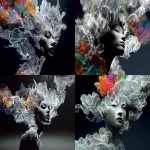

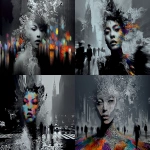
](https://images.ai-img.art/thumbnails/150/a3ed6513a6661aa3ee46e0c2924d1e8888854e91d8908de39db5590dc41f8d8f.webp)










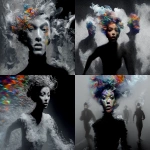



](https://images.ai-img.art/thumbnails/150/7cf5a08238f29c821f52bb4f63db48af0b7f633ff3b9f7253074d78ced9ff6f6.webp)



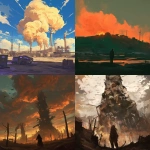






](https://images.ai-img.art/thumbnails/150/bd056a4718c27444e064198762f8dc8ffa1f74f1afd7dcda8d5cb8b142797d6e.webp)
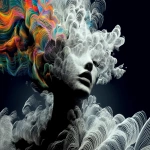

](https://images.ai-img.art/thumbnails/150/ff09e32d2be011c0dd785984c5c1e47839ce551a31da1bde242860b30df2aa30.webp)
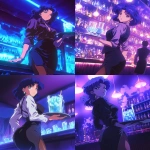
](https://images.ai-img.art/thumbnails/150/2ebdeb4f7db35100e5be5de9bc3e533a40d14e5feedefd7ffc586524a0f3ba8c.webp)


](https://images.ai-img.art/thumbnails/150/0ba0be922ab76af53f75ab90126ae2b18a600ee3b96941e8ab897a9f10594e5a.webp)
](https://images.ai-img.art/thumbnails/150/847809c77ca9a73b68bc190e6efb06fec87157685a243730d5a66a403b0e6e10.webp)

](https://images.ai-img.art/thumbnails/150/685ae68cfab93a7e59a71206867b060c45bd6fd3cd561c4fe60fca514b09c5f8.webp)





